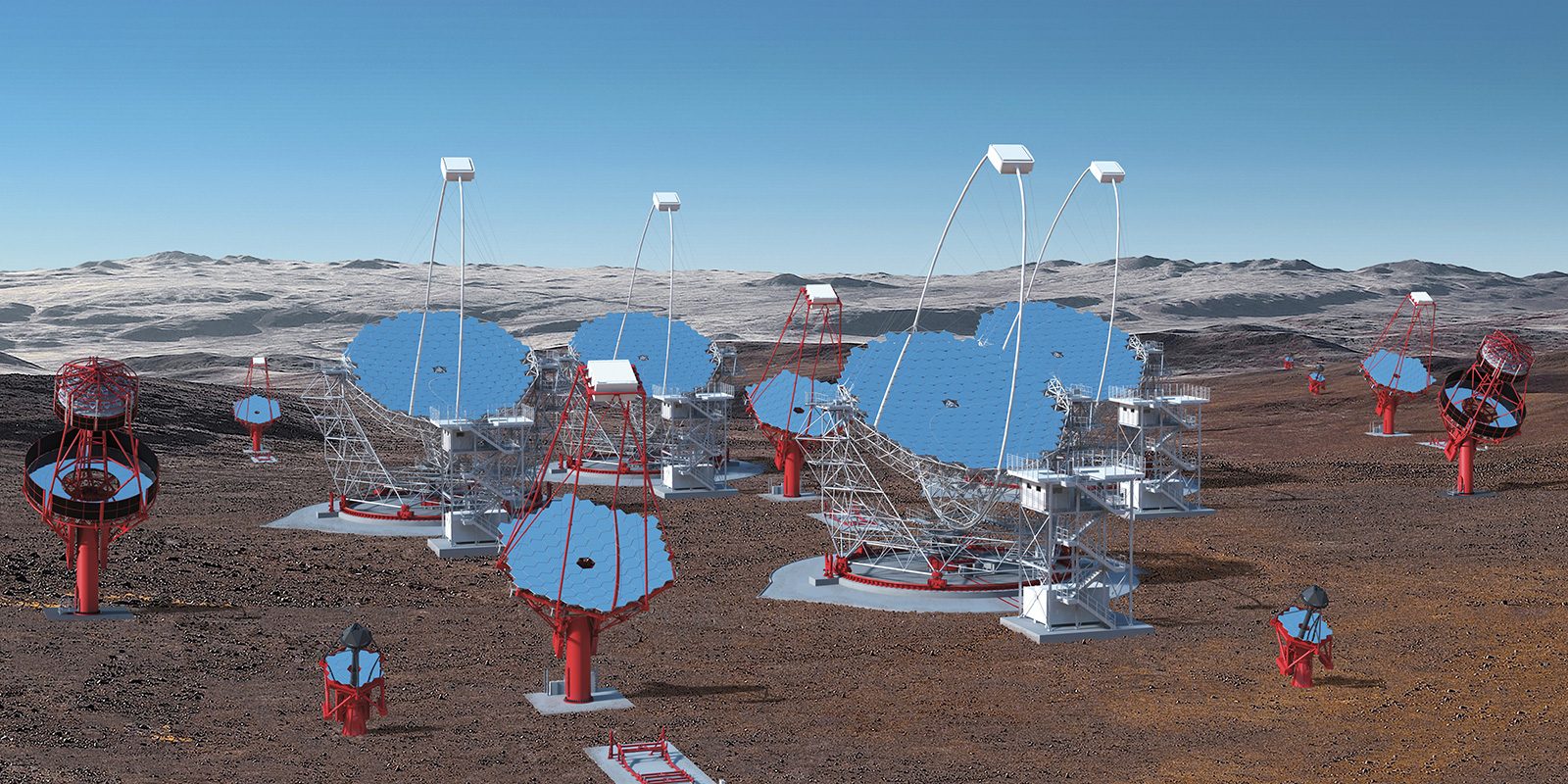
This story appeared in the Fall 2020 Letters & Science magazine. Story reprinted from UW–Madison College of Letters & Sciences website with permission.
It’s not often that a graduate student has the opportunity to fine-tune the inner workings of a high-energy gamma-ray telescope, but that’s exactly what physics graduate student Leslie Taylor was doing in the remote mountains of Arizona, at the Fred Lawrence Whipple Observatory some 35 miles south of Tucson.
Taylor is part of a research group within the Wisconsin IceCube Particle Astrophysics Center, led by physics professor Justin Vandenbroucke. The group plays a leading role in preparing the prototype Schwarzschild-Couder Telescope (pSCT) for the Cherenkov Telescope Array. The array, which will be made up of 118 small, medium and large telescopes across two sites (one near Paranal, Chile, and one on the island of La Palma in the Canary Islands), will eventually be known as the Cherenkov Telescope Array Observatory, the world’s largest and most sensitive very-high-energy gamma-ray observatory.
“It’s more common for graduate students to take data with the telescopes rather than work on hardware,” says Taylor. “When I first started working in Justin’s lab, the camera was located here in Wisconsin and I had the opportunity to work on it for several months. I like hands-on hardware stuff.”
The camera—golf cart–sized, weighing 800 pounds, and capable of recording movies at a rate of a billion frames per second—was shipped to Arizona in order to be lifted and installed into the telescope. Taylor was asked to go along and help with a multi-stage process that required the camera modules, main structure, backend electronics, and auxiliary systems to be reconstructed onsite.
“There were many technical challenges,” she says. After the summer monsoon in Arizona, “I discovered that water had made its way into the camera enclosure and damaged some of the camera sensors. In addition to removing and replacing them, I also completely waterproofed the camera enclosure to prevent it from happening in the future.”
During her time in Arizona, Taylor learned how to operate all major telescope systems, including the positioner, cooling system, power, and camera, and drafted a user manual so that new personnel could quickly and easily learn how to operate the telescope and take data.
(She also saw “a ton” of animals—skunks, javelina, coatimundi, mountain lions, owls— and some beautiful sunrises.)
“As I was working onsite in 2018, another team from UCLA was working on installing and aligning the mirrors,” she says. “In January 2019, I took data for the first time with the mirrors uncovered. We achieved ‘first light’”— meaning that the team detected particle showers for the first time. After commissioning the system and aligning the mirrors during 2019, in 2020 they detected the Crab Nebula, a remnant of cosmic gas and dust left over from an exploding star that is a bright source of gamma rays. The ability to detect it is the “gold standard” for calibration and verification of new gamma-ray instruments.
Vandenbroucke announced those results on behalf of the CTA Consortium at the 236th Meeting of the American Astronomical Society. Taylor and the entire pSCT team helped achieve the results and put together the materials for the announcement, an experience she describes as “extremely exciting.”
“We got to share all the work that so many people put into the project,” she says. “It is truly exciting to see a telescope literally being built in front of my eyes.”
